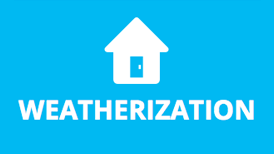Energy Efficiency
From leaks to inattentive usage, your home could be wasting a lot of energy. So take a little advice from OG&E and our friends. Learn to stop losing energy and start saving money.
Watch the Oklahoma City Thunder's very own Rumble the Bison, with energy-efficiency tips to help you save big.
Combine your energy-efficiency and SmartHours savings—and bank BIG BUCKS!
LEARN MORE

In-Depth
Our detailed video offers vital information on how you're using energy, your costs, and ways to end waste—of energy and money.
-

Qualify for Weatherization
Hundreds of dollars worth of improvements for qualified customers, free.
-

Sign up for HEEP
Our Home Energy Efficiency Program offers a free A/C tune up and money-saving rebates.
-

myOGEpower
Know your power, to be more efficient: myOGEpower. Click here to activate your free, password-protected account.
Save the Dates
Each season offers big savings. Use these handy tips each month to raise your energy savings and lower your energy costs. Here's your first bonus tip: Clean or change the filter in your heat and air system every two to three months.
Where does the energy in your home go?
Too much of it could escape. Take a look at your home energy costs and where efficiency can equal savings. And for a more detailed view, watch our Energy Efficiency video at the top of the page.
(and get your free home efficiency kit while you’re at it)
Your home is probably leaking air, taking your money with it. This short video details easy steps to make your home energy-efficient, for year-round savings.
Even better, switch to SmartHours and get a free SmartTemp™ Thermostat (a $300 value) plus a free Home Energy Efficiency Kit (a $50 value). It's packed with weatherstrip, caulk, an LED lightbulb and more, everything you need!
Cambie a HorasInteligentes y obtenga gratis un Termostato SmartTemp™ (con valor de $300) además de un Kit de Eficiencia Energética para el Hogar (con valor de $50). Está equipado con tiras selladoras, masilla, un foco LED y mucho más. ¡Todo lo que usted necesita! ¡Comience a ahorrar hoy mismo! O llame al: 877-898-3834 de 7 a.m. a 6 p.m.

















